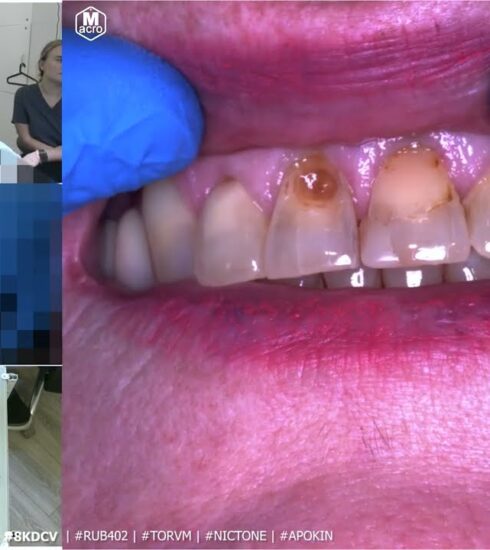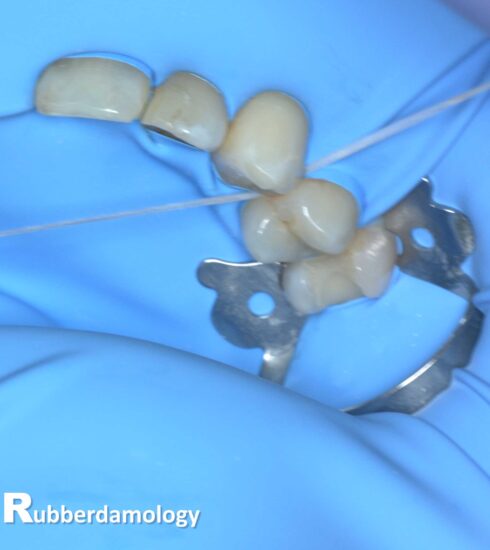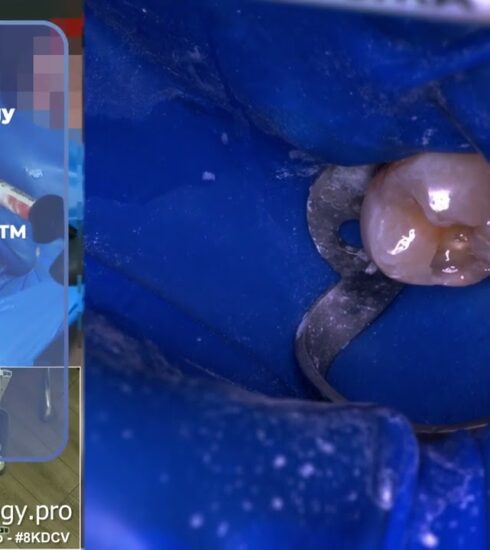Rubber Dam in Dentistry: A Comprehensive Overview
Rubber Dam in Dentistry: A Comprehensive Overview
Rubber dam isolation is a fundamental technique in modern dentistry, considered a cornerstone of quality restorative care. Here’s a detailed breakdown covering its purpose, advantages, disadvantages, materials, placement, and considerations:
A rubber dam is an essential tool in dentistry used to isolate the operative site during various procedures. Here’s a detailed breakdown of its use, application, benefits, and limitations:
Definition and Use
1. What is Rubber Dam?
Rubber dam (also known as a dental dam) is a thin, latex or non-latex sheet used to isolate a tooth or teeth during a dental procedure. It creates a dry, clean operating field, free from saliva, blood, and other contaminants. A clamp secures the dam around the tooth, and a frame holds it in place.
- Purpose: The rubber dam serves as a flexible barrier that isolates the treatment area from saliva, blood, and soft tissues.
- Application Areas: It is commonly used in procedures such as fillings, crown placements, and sealant applications to maintain a dry environment.
2. Why Use Rubber Dam? (Advantages)
The benefits of rubber dam isolation are extensive:
- Dry Operating Field: This is the primary benefit. Moisture interferes with the bonding of many dental materials (composites, adhesives, cements). A dry field ensures optimal material performance and longevity.
- Improved Visibility: The dam retracts soft tissues (cheeks, tongue, gingiva), providing a clear, unobstructed view of the operating site.
- Protection for the Patient:
- Aspiration Prevention: It prevents accidental swallowing or aspiration of instruments, debris, irrigants, and restorative materials.
- Soft Tissue Protection: Protects the gingiva and mucosa from irritants and trauma.
- Reduced Microbial Spread: Limits the spread of bacteria and aerosols, benefiting both patient and clinician.
- Enhanced Access: Provides better access to the tooth, especially in difficult-to-reach areas.
- Reduced Salivation: Helps control salivary flow, which is a significant advantage during bonding procedures.
- Improved Material Properties: Bonding agents and restorative materials perform better when applied to a dry surface. This leads to longer-lasting restorations.
- Patient Comfort: While initially unfamiliar, rubber dam can reduce anxiety by preventing water and debris from entering the patient’s mouth.
- Efficiency: The dry field allows for faster and more efficient procedures.
- Protection for the Clinician: Reduces exposure to aerosols and splatter.
3. Disadvantages & Challenges
- Patient Acceptance: Some patients find it uncomfortable or claustrophobic. Proper communication and explanation are crucial.
- Time Investment: Placement takes time and requires skill.
- Potential for Discomfort: Incorrect clamp placement can cause gingival irritation.
- Difficulty in Certain Situations: It can be challenging to use with severely broken-down teeth, short clinical crowns, or in patients with limited mouth opening.
- Allergic Reactions: Latex allergy is a concern (non-latex options are available).
- Cost: The materials add to the cost of the procedure.
4. Materials
- Rubber Dam Sheet: Available in latex and non-latex options (nitrile, neoprene). Different thicknesses and colors are available.
- Rubber Dam Clamps: Various designs and sizes to fit different teeth. Clamps are categorized as:
- Winged Clamps: Most common type, providing good retention.
- Wingless Clamps: Used in areas where wings interfere with access.
- Young’s Clamps: Used for anterior teeth.
- Periodontal Clamps: Used for teeth with periodontal disease.
- Rubber Dam Punch: Used to create holes in the dam sheet to fit the tooth being isolated.
- Rubber Dam Frame: Holds the dam sheet in place, providing a stable barrier. Frames come in different sizes and designs.
- Rubber Dam Forceps: Used to place and remove clamps.
- Lubricant: Water-based lubricant to aid in dam placement.
- Floss: Used to help guide the dam through interproximal spaces.
- Sealant/Bonding Agent: Used to seal the dam to the tooth surface.
Application Process
5. Placement Procedure (Simplified)
- Preparation: Assess the tooth, select appropriate clamp and dam sheet.
- Punch Holes: Punch holes in the dam sheet corresponding to the tooth being isolated.
- Clamp Selection and Placement: Choose the correct clamp size and carefully place it around the tooth. Ensure it is stable and does not impinge on the gingiva.
- Dam Placement: Carefully guide the dam sheet through the holes and around the tooth.
- Secure Dam: Use a frame to secure the dam in place.
- Inversion: Invert the dam through the interproximal spaces to ensure a tight seal.
- Ligation: Ligate the dam to ensure a secure fit and prevent leakage.
Benefits
6. Considerations & Best Practices
- Patient Communication: Explain the procedure thoroughly and address any concerns.
- Proper Clamp Selection: Choose the correct clamp size and design to avoid trauma.
- Secure Seal: Ensure a tight seal around the tooth to prevent leakage.
- Interproximal Seal: Pay attention to the interproximal seal to prevent contamination.
- Regular Monitoring: Monitor the dam throughout the procedure to ensure it remains secure and intact.
- Non-Latex Options: Use non-latex options for patients with latex allergies.
- Training and Experience: Proper training and experience are essential for successful dam placement.
7. When to Use Rubber Dam?
- Composite Restorations: Essential for bonding composite resin.
- Endodontic Procedures: To maintain a sterile operating field during root canal treatment.
- Bonding Procedures: For bonding veneers, crowns, and other restorations.
- Cementation Procedures: To prevent contamination during cementation.
- Acid Etching: To protect surrounding tissues from acid etching.
- Cosmetic Dentistry: For procedures such as bleaching and microabrasion.
- Moisture Control: Essential for procedures requiring bonding, as it prevents contamination by saliva or blood.
- Improved Visibility and Access: Enhances precision by providing a clear view of the operative site.
- Patient Comfort: Reduces discomfort associated with prolonged treatment in wet conditions.
- Safety: Minimizes risks of aspiration or soft tissue injury.
Characteristics and Uses
In conclusion, rubber dam isolation is a valuable technique that significantly improves the quality and predictability of dental procedures. While it requires skill and attention to detail, the benefits far outweigh the challenges. It is a cornerstone of modern dental practice, promoting optimal patient care and long-lasting restorative results.
In summary, the rubber dam is a versatile tool that significantly enhances treatment outcomes by maintaining optimal conditions during dental procedures. Its use is fundamental in ensuring precision and safety while minimizing potential complications.
Limitations
- Feasibility issues, especially with anxious patients or children who may not cooperate.
- Not practical for certain procedures like those involving erupting teeth where isolation isn’t possible.
- Essentials of Dentistry Quick Review and Examination Preparation Rushik Dhaduk BDS Tutor, Dharmsinh Desai University Nadiad, Gujarat, India ISBN 978-93-5025-368-7
- Noncarious Cervical Lesions and Cervical Dentin Hypersensitivity: Etiology, Diagnosis, and Treatment Edited by Paulo V. Soares, DDS, MS, PhD John O. Grippo, DDS ISBN 9780867157543
- Dental Caries The Disease and Its Clinical Management Third Edition – Edited by Ole Fejerskov, Bente Nyvad, and Edwina Kidd – ISBN 978-1- 118-93582 -8
Disclaimer: This information is for general knowledge and educational purposes only, and does not constitute medical advice. Always consult with a qualified dentist for any dental concerns or treatment options.




